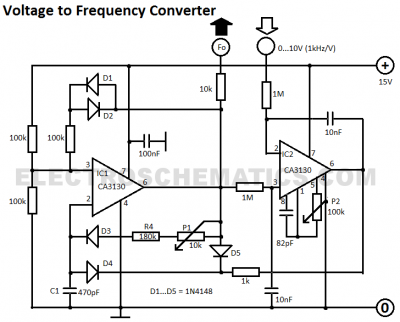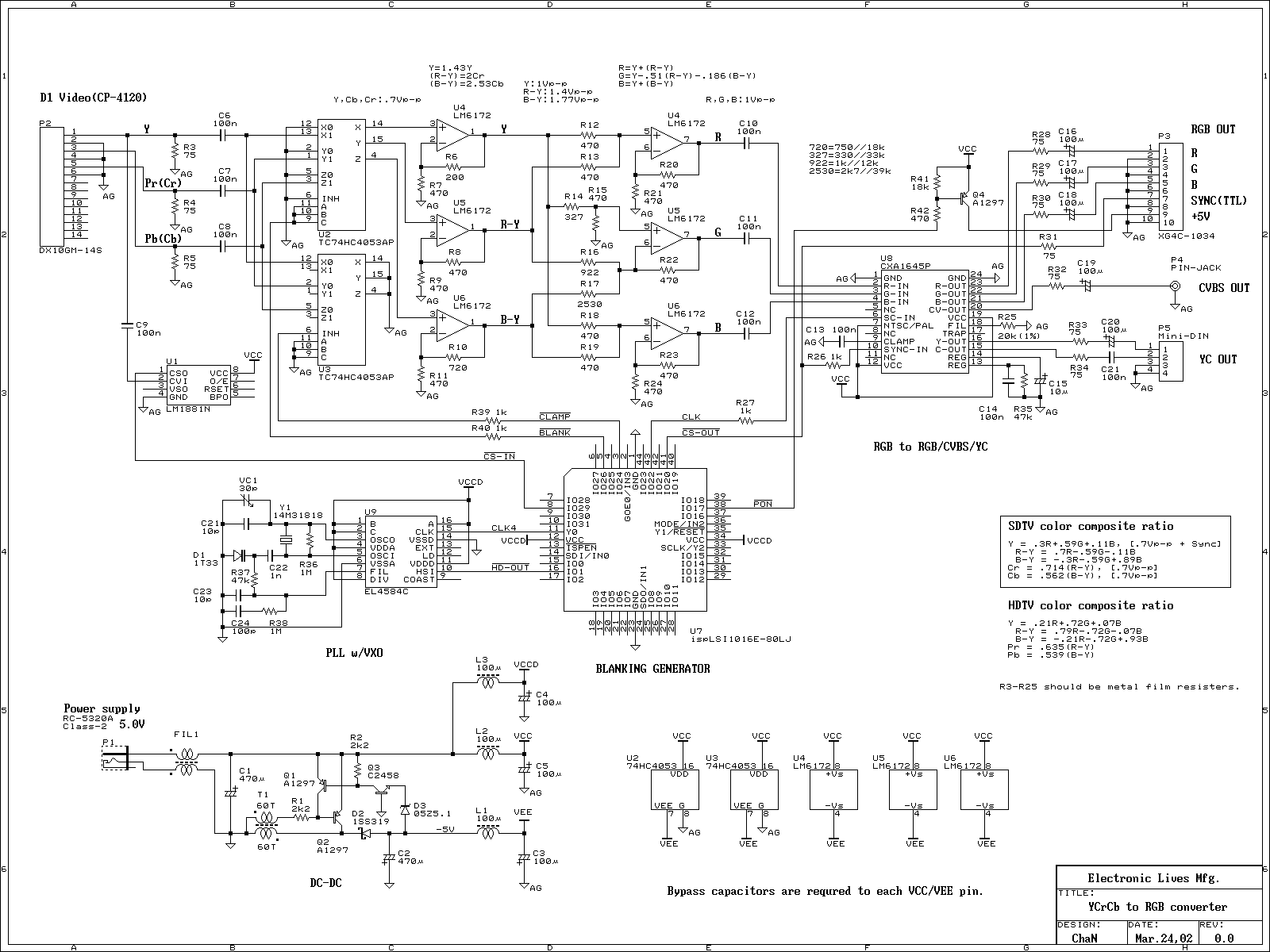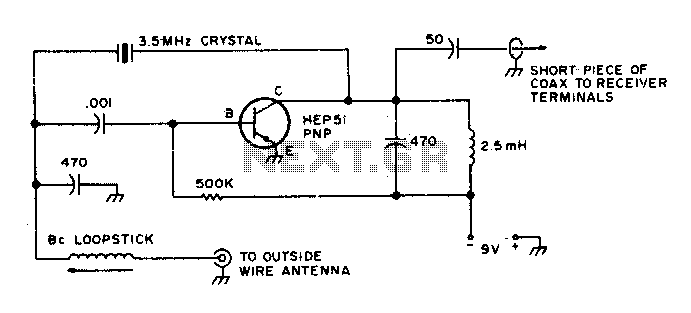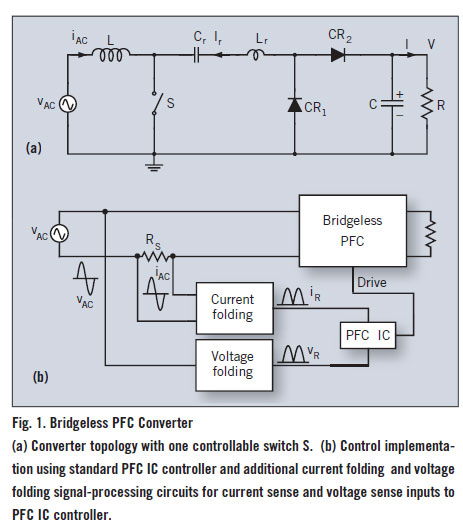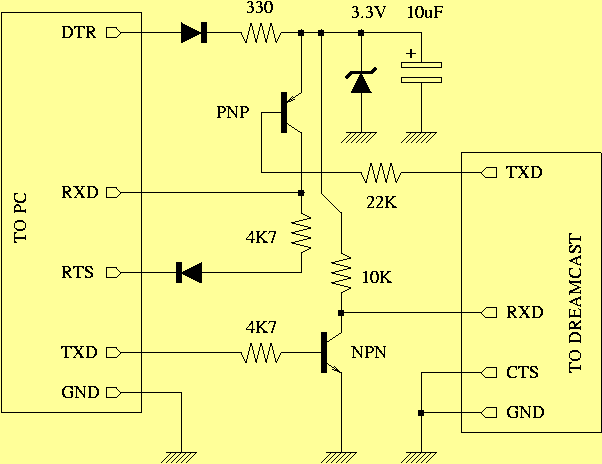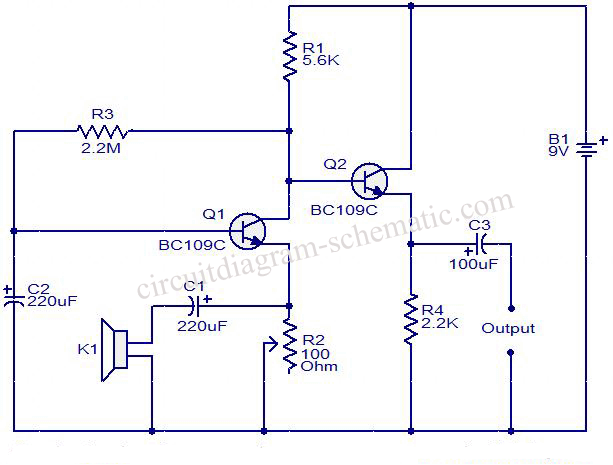
VGA to PAL and NTSC converter

The circuit needs that the VGA card sends out the video signal in the RGB format compatible with PAL or NTSC standard video timings. This is accomplished with the right VGA to TV driver. More: This circuit is based on the AD722 IC from Analog Devices. The AD722 is a low-cost RGB to NTSC/PAL Encoder that converts red, green, and blue color component signals into their corresponding luminance (baseband amplitude) and chrominance (subcarrier amplitude).
The circuit utilizes the AD722 integrated circuit, which is specifically designed to facilitate the conversion of RGB signals from a VGA source into a format suitable for standard television displays operating under PAL or NTSC standards. The primary function of the AD722 is to take in the separate red, green, and blue signals from the VGA output and encode them into a composite video signal that can be transmitted over standard coaxial cables to a television.
The circuit design begins with the VGA output, where the RGB signals are extracted. Each of these signals is then fed into the respective input pins of the AD722. The IC processes the RGB inputs and generates two outputs: the luminance (Y) and chrominance (C) signals. The luminance signal represents the brightness of the image and is derived from a weighted combination of the RGB inputs, typically following the formula Y = 0.299R + 0.587G + 0.114B. The chrominance signal carries the color information and is modulated onto a subcarrier frequency, which is essential for television transmission.
The circuit may also include additional components such as resistors and capacitors to filter noise and stabilize the output signals. Proper decoupling capacitors are important for ensuring stable operation of the AD722, especially when handling high-frequency video signals. Furthermore, the output from the AD722 can be connected to a modulator if RF transmission is desired, or it can be directly connected to a composite video input on a television.
In summary, this circuit effectively bridges the gap between computer-generated video signals and traditional television standards, enabling the display of VGA output on standard PAL or NTSC televisions through the use of the AD722 RGB to NTSC/PAL encoder.The circuit needs that the VGA card sends out the video signal the the RGB format compatible with PAL or NTSC standard video timings. This is accomplished with right VGA to TV driver. This circuit is based on AD722 IC from Analog Devices. The AD722 is a low cost RGB to NTSC/PAL Encoder that converts red, green and blue color component signals into their corresponding luminance (baseband amplitude) and chrominance (subcarrier amplitude 🔗 External reference
The circuit utilizes the AD722 integrated circuit, which is specifically designed to facilitate the conversion of RGB signals from a VGA source into a format suitable for standard television displays operating under PAL or NTSC standards. The primary function of the AD722 is to take in the separate red, green, and blue signals from the VGA output and encode them into a composite video signal that can be transmitted over standard coaxial cables to a television.
The circuit design begins with the VGA output, where the RGB signals are extracted. Each of these signals is then fed into the respective input pins of the AD722. The IC processes the RGB inputs and generates two outputs: the luminance (Y) and chrominance (C) signals. The luminance signal represents the brightness of the image and is derived from a weighted combination of the RGB inputs, typically following the formula Y = 0.299R + 0.587G + 0.114B. The chrominance signal carries the color information and is modulated onto a subcarrier frequency, which is essential for television transmission.
The circuit may also include additional components such as resistors and capacitors to filter noise and stabilize the output signals. Proper decoupling capacitors are important for ensuring stable operation of the AD722, especially when handling high-frequency video signals. Furthermore, the output from the AD722 can be connected to a modulator if RF transmission is desired, or it can be directly connected to a composite video input on a television.
In summary, this circuit effectively bridges the gap between computer-generated video signals and traditional television standards, enabling the display of VGA output on standard PAL or NTSC televisions through the use of the AD722 RGB to NTSC/PAL encoder.The circuit needs that the VGA card sends out the video signal the the RGB format compatible with PAL or NTSC standard video timings. This is accomplished with right VGA to TV driver. This circuit is based on AD722 IC from Analog Devices. The AD722 is a low cost RGB to NTSC/PAL Encoder that converts red, green and blue color component signals into their corresponding luminance (baseband amplitude) and chrominance (subcarrier amplitude 🔗 External reference
